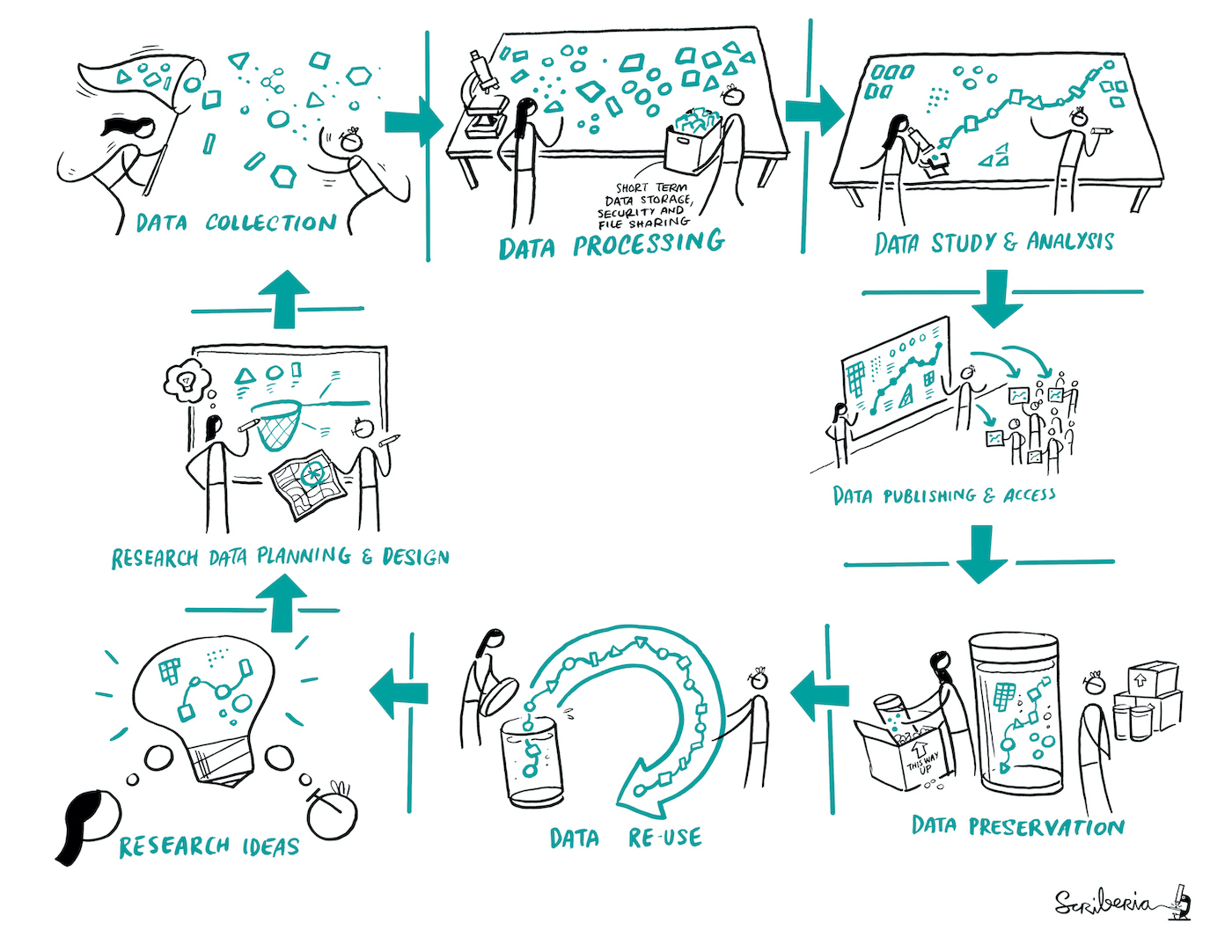Overview of Reproducible Research
Contents
Overview of Reproducible Research¶
Prerequisites¶
No previous knowledge needed.

Fig. 4 The Turing Way project illustration by Scriberia. Used under a CC-BY 4.0 licence. DOI: 10.5281/zenodo.3332807.¶
Summary¶
Scientific results and evidence are strengthened if they are reproduced and confirmed by several independent researchers (see definitions). With all parts used in an analysis being available and/or documented, valuable time is saved reproducing published results and other researchers can easily build on these research results and re-use data or code for their analyses.
Learn about the less obvious benefits of working reproducibly in the Added Advantages subchapter.
Major media outlets have reported on investigations showing that a significant percentage of scientific studies cannot be reproduced.
This leads to other academics and society losing trust in scientific results [Bak16]. Working reproducibly means others can check your results - even early on in the research process. Thus, the full analysis and methodology are transparent.
In addition, so called “negative results” can be published easily, helping avoid other researchers wasting time repeating analyses that will not return the expected results [DL10]. For further reading resources on reproducibility, please check out the Resources subchapter.
Chapter Tags: This chapter is curated for the Turing Data Study Group (turing-dsg).




